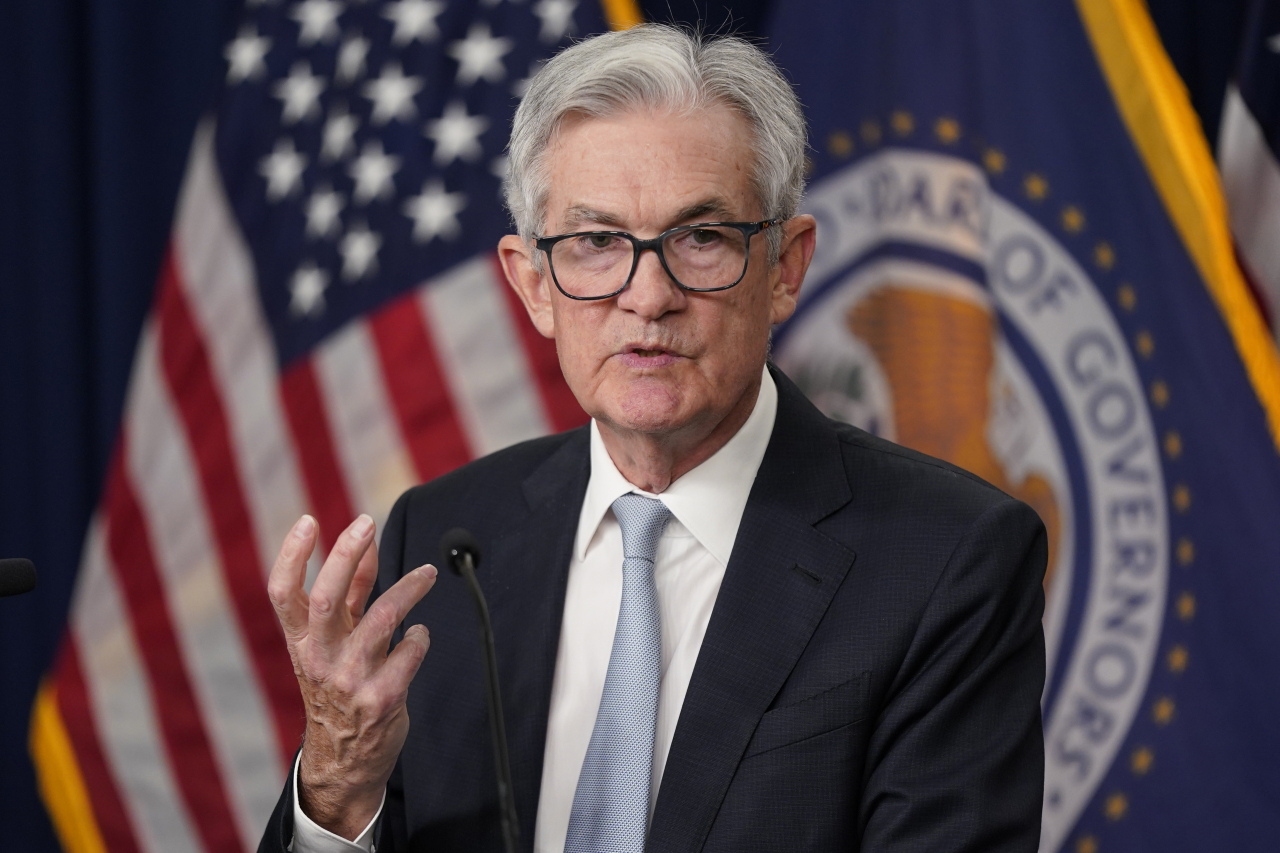S. Korea braces for impact as US delivers fourth big rate hike
By Choi Si-youngPublished : Nov. 3, 2022 - 15:55

South Korea’s financial authorities said Thursday they would closely monitor for any signs of increasing volatility in the financial markets following a big US rate hike -- the fourth consecutive 75-point increase since June amid persistent inflation.
“Uncertainties are certainly growing and we’ll be extra vigilant in our response to what may come in our way,” Finance Minister Choo Kyung-ho said at a meeting he called to discuss Wednesday’s rate increase with the country’s economic policy chiefs, such as the central bank governor, the top financial policymaker and financial watchdog.
Responses include intervention to steady markets including the onshore currency platform, according to the Bank of Korea, which held a separate meeting an hour apart from Choo’s with its deputy governor taking charge. The local currency had quickly depreciated against the US dollar, reaching a 13-year low against the greenback as investors fled for higher yields from the safe-haven asset. With the current US rate at 3.75 to 4 percent and the Korean rate at 3 percent, the won faces increasing depreciation pressure.
“Currency fluctuations and capital outflows will be under greater scrutiny than ever,” Lee Seung-heon, the deputy governor, said in a clear attempt to calm mounting worries that Asia’s fourth-largest economy could come close to a repeat of the 1997 Asian financial crisis, when dollar shortages crushed the country.
For months, BOK Gov. Rhee Chang Yong has played down any such speculation, openly addressing the public that not only the economy could weather a rate gap as big as a full percentage point, but the foreign exchange reserves remain strong. The country is far from reentering a currency crisis, Rhee says. A week earlier, the director heading the Asia Pacific department at the International Monetary Fund weighed in on the debate himself, backing Rhee’s assessment.
But the quickly diverging interest rate differential between Korea and the US is increasingly making investors nervous about whether Seoul could actually ride out a prolonged dollar rally that could drain more dollar reserves in months to come. According to the latest BOK data, currency reserves shrank for a third straight month in October. The monthly drop in holdings in September was the biggest in 14 years. Efforts to counter the won’s slump against the dollar prompted the drop.
Supporting tighter policy to curb capital outflows as well as domestic inflation running at a 24-year high represents only the initial steps in reviving a faltering economy for policymakers in Seoul. The Korean economy grew at its slowest pace in a year in the third quarter, as poor net exports offset both consumption and investment, the latest government data found. Still, the BOK maintains the economy could expand 2.6 percent annually for the year -- a target it said would be within grasp if the economy avoided negative growth in the fourth quarter.
Sagging business confidence triggered by a recent credit default is a headache for policymakers as well. Early in October, a state-backed local developer missed a bond payment, freezing bond and short-term money markets in a blow to market expectations for government guarantees. The government not only rolled out an emergency liquidity program worth at least 50 trillion won ($35 billion), but essentially asked the country’s five banking giants to chip in. Those companies agreed to provide an additional 95 trillion won in liquidity.
According to the Korea Center for International Finance, the credit default swap premium -- derivative contracts meant to protect investors from a Korean default -- on the five-year global sovereign bonds shot up to 70 basis points at the end of October, more than three times what they were at the end of December last year. The latest reading marks the highest level since November 2017.



![[Exclusive] Korean military set to ban iPhones over 'security' concerns](http://res.heraldm.com/phpwas/restmb_idxmake.php?idx=644&simg=/content/image/2024/04/23/20240423050599_0.jpg&u=20240423183955)




![[Herald Interview] 'Amid aging population, Korea to invite more young professionals from overseas'](http://res.heraldm.com/phpwas/restmb_idxmake.php?idx=644&simg=/content/image/2024/04/24/20240424050844_0.jpg&u=20240424200058)
![[Pressure points] Leggings in public: Fashion statement or social faux pas?](http://res.heraldm.com/phpwas/restmb_idxmake.php?idx=644&simg=/content/image/2024/04/23/20240423050669_0.jpg&u=)










